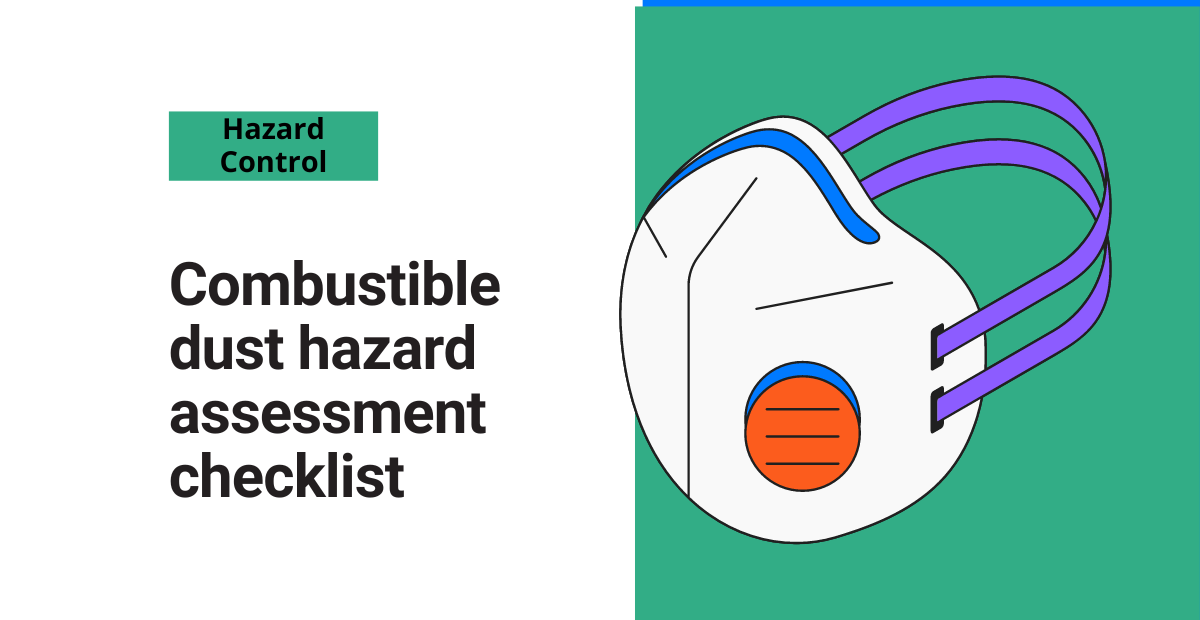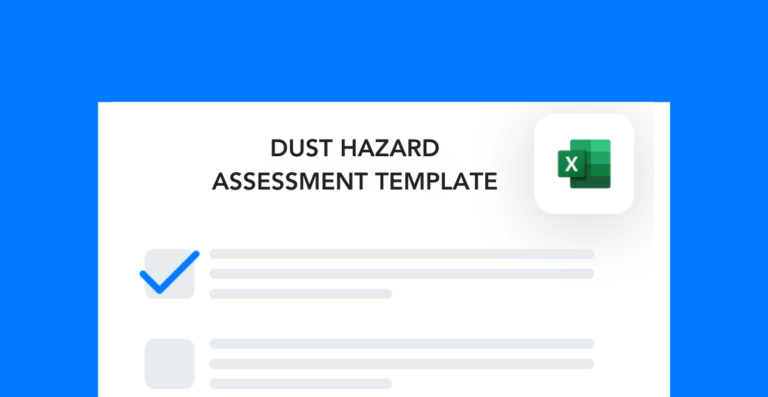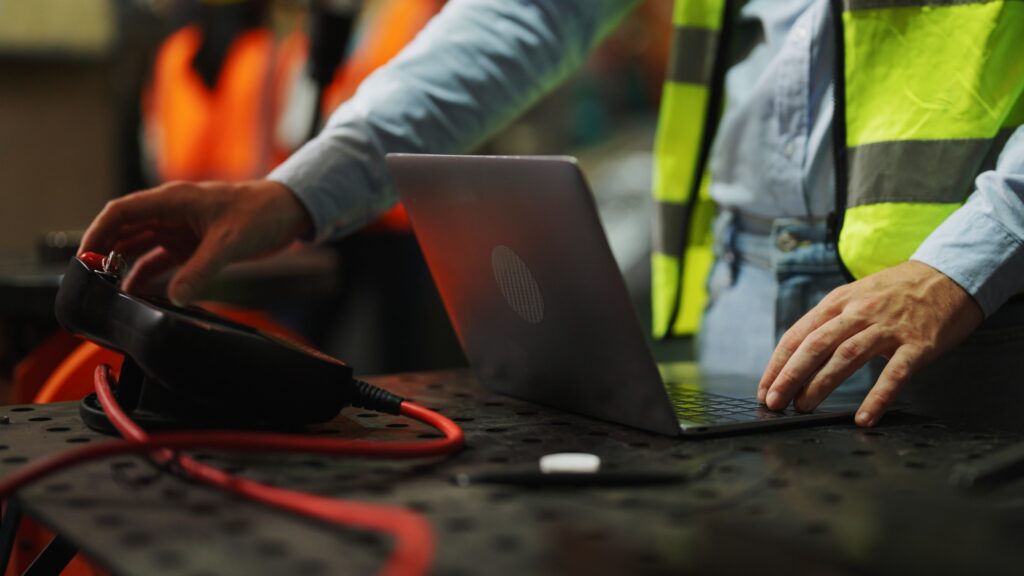The purpose of a combustible dust hazard assessment is to find and control workplace hazards that may lead to harmful dust explosions.
For each task or step within the process, you note potential sources of dust hazards. Then, using the information gathered, you determine the risk exposure that the process poses to workers.
Using the results of this assessment, you can then determine corrective actions to control or eliminate the dust hazards for good.
Free template!
Use this dust hazard assessment template to perform your review and to document your findings.
Dust hazard assessment checklist
Performing a hazard assessment is relatively straightforward. The key is to pay attention to details and think carefully about each individual process step.
Below is a simple checklist you can follow to complete the assessment from start to finish.
Step 1: Break down the process.
Start by observing the process and listing out all the steps workers must take. Different steps may involve different tools and materials, so it’s very important to look at each step as its own entity.
Step 2: Identify dust hazards.
Take a closer look at each step in the process to find possible sources of dust particles. Common sources include wood, chemicals, metals, and other substances in the workspace.
In addition to sources, you’re also looking for areas where dust particles may accumulate in high enough quantities to pose a fire risk. Check out equipment, storage areas, vents, and more for accumulation points.
Step 3: Consider existing control measures.
Review the task and make note of any existing control measures that are in place. Because you may already have some prevention strategies in place, this may lower your final assessment of the overall hazard level.
Step 4: Evaluate the overall risk level.
Determine the risk level of the process using all the information you’ve gathered from your observations. You can use a general scale of “low risk” to “severe risk” to categorize the various hazards within the process.
Step 5: Establish corrective actions.
The final stage of any hazard assessment is to establish next steps. How will you proactively address the hazards you’ve identified?
Control measures for combustible dust hazards may include:
- Cleaning out ducts and ventilation systems and scheduling future maintenance.
- Swapping out PPE or equipment used within the process.
- Changing to non-combustible work materials.
- Installing new explosion prevention devices throughout the work area.
Tracking your progress
Once you’ve decided on your strategy, it’s important to track progress on each corrective action. Make sure you assign each action to an owner and have the owner document when they’ve completed their assignment(s).
A combustible dust hazard assessment should only be performed by a qualified individual with knowledge of these types of workplace hazards. Additionally, this person should understand regulatory requirements concerning the control and prevention of combustible dust hazards.
Check out the National Fire Protection Association’s (NFPA) combustible dust standard for more information.




